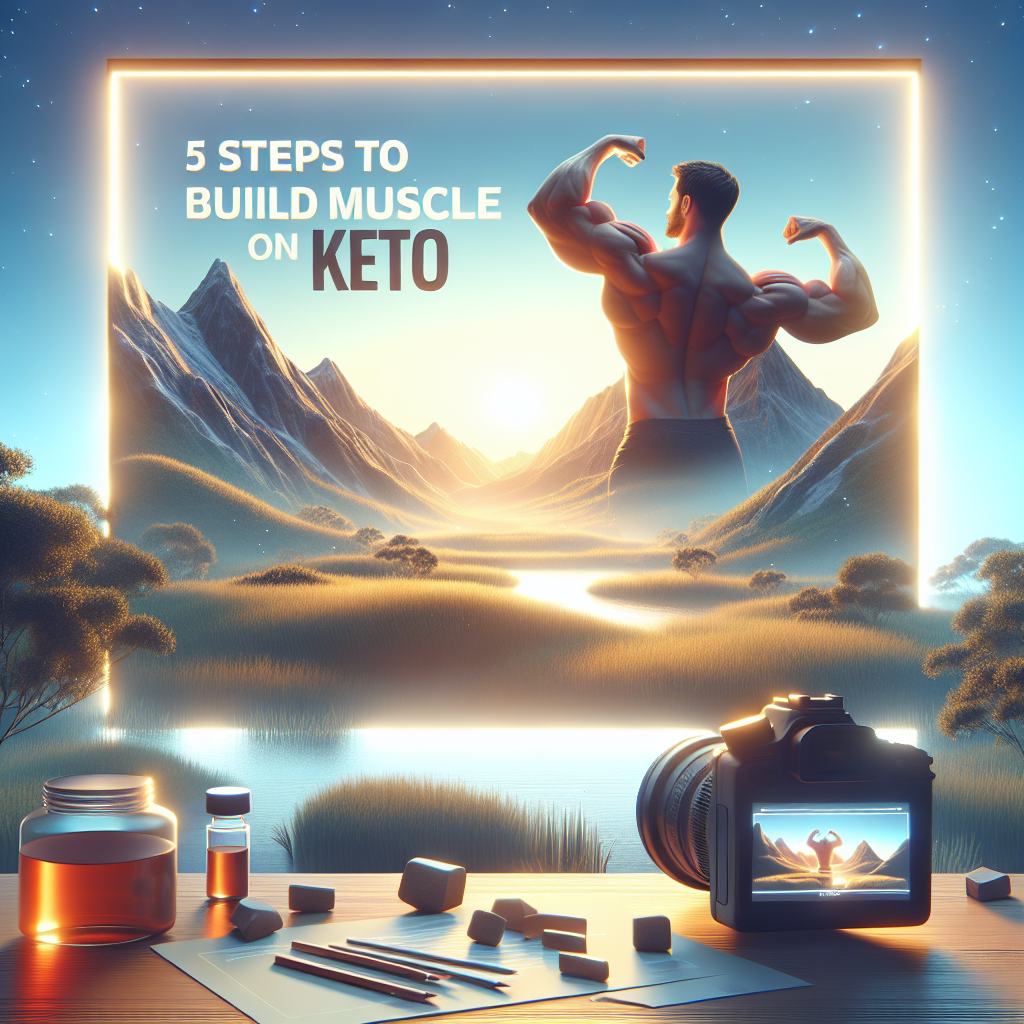
-
Table of Contents
Follow My 5 Steps to Build Muscle on Keto

The ketogenic diet, or keto for short, is a low-carb, high-fat diet that has been linked to many health benefits, including weight loss, improved heart health, and better brain function. But can it also help you build muscle? The answer is a resounding yes. In this article, we will explore five steps to build muscle on a keto diet, backed by scientific research and real-life examples.
Step 1: Understand the Basics of Keto
Before diving into the specifics of muscle building, it’s crucial to understand the basics of the ketogenic diet. The goal of the diet is to get your body into a state of ketosis, where it’s burning fat for fuel instead of carbohydrates. This is achieved by drastically reducing your carb intake and increasing your fat intake.
Research has shown that the ketogenic diet can be an effective way to lose weight and improve health. A study published in the Journal of the American Medical Association found that participants on a low-carb diet lost more weight than those on a low-fat diet. Another study published in the New England Journal of Medicine found that a low-carb diet was more effective for weight loss and cardiovascular risk factor reduction than a low-fat diet.
But what about muscle building? While traditional wisdom might suggest that you need carbs to build muscle, recent research suggests otherwise. A study published in the Journal of the International Society of Sports Nutrition found that participants following a ketogenic diet were able to maintain muscle mass while losing weight, suggesting that the diet could be beneficial for muscle building.
Step 2: Adjust Your Protein Intake
Protein is a crucial nutrient for muscle building. It provides the building blocks for muscle tissue and stimulates muscle protein synthesis, the process by which the body builds new muscle. However, on a ketogenic diet, it’s important to find the right balance of protein.
Too much protein can kick you out of ketosis, as the body can convert excess protein into glucose, a type of carbohydrate. On the other hand, too little protein can hinder muscle growth. According to a study published in the American Journal of Clinical Nutrition, the optimal protein intake for muscle growth is around 1.6 grams per kilogram of body weight per day.
For example, if you weigh 70 kilograms (154 pounds), you would need about 112 grams of protein per day to optimize muscle growth. However, this amount may vary depending on your individual needs and activity level.
Step 3: Incorporate Strength Training
Strength training is a key component of any muscle-building plan, and it’s no different on a ketogenic diet. By challenging your muscles with resistance exercises, you stimulate muscle protein synthesis and promote muscle growth.
A study published in the Journal of Applied Physiology found that resistance training increased muscle protein synthesis and muscle mass in healthy adults. Another study published in the Journal of Strength and Conditioning Research found that resistance training combined with a high-protein diet led to greater increases in muscle mass and strength compared to resistance training alone.
Examples of strength training exercises include weightlifting, bodyweight exercises like push-ups and pull-ups, and resistance band exercises. It’s recommended to perform strength training exercises for all major muscle groups at least two times per week.
Step 4: Monitor Your Carb Intake
While the ketogenic diet is a low-carb diet, it doesn’t mean you have to eliminate carbs completely. In fact, some carbs can be beneficial for muscle building, especially around your workouts.
Research has shown that consuming carbs before and after workouts can enhance muscle recovery and growth. A study published in the Journal of the International Society of Sports Nutrition found that consuming a high-protein, high-carb meal after resistance training led to greater increases in muscle protein synthesis compared to a high-protein, low-carb meal.
On a ketogenic diet, you can incorporate a strategy known as targeted ketogenic dieting, where you consume a small amount of carbs before and/or after your workouts. This can provide the benefits of carbs for muscle building while still maintaining ketosis.
Step 5: Stay Hydrated and Get Enough Sleep
Last but not least, don’t forget about the basics of good health: hydration and sleep. Both are crucial for muscle recovery and growth.
Dehydration can impair muscle function and hinder your performance during workouts. On the other hand, adequate hydration can enhance muscle function and promote recovery. A study published in the Journal of Athletic Training found that dehydration can decrease muscle strength and power, while another study published in the Journal of Applied Physiology found that hydration can enhance muscle protein synthesis.
Similarly, sleep is crucial for muscle recovery and growth. A study published in the Journal of the American Medical Association found that sleep deprivation can reduce muscle protein synthesis and lead to muscle loss. On the other hand, getting enough sleep can enhance muscle recovery and growth.
Conclusion
Building muscle on a ketogenic diet is not only possible, but it can also be highly effective. By understanding the basics of the diet, adjusting your protein intake, incorporating strength training, monitoring your carb intake, and taking care of your overall health, you can achieve your muscle-building goals while enjoying the many benefits of the ketogenic diet.
Remember, everyone’s body is different, and what works for one person may not work for another. It’s important to listen to your body and adjust your diet and exercise routine as needed. With patience, consistency, and the right approach, you can build muscle on a ketogenic diet.